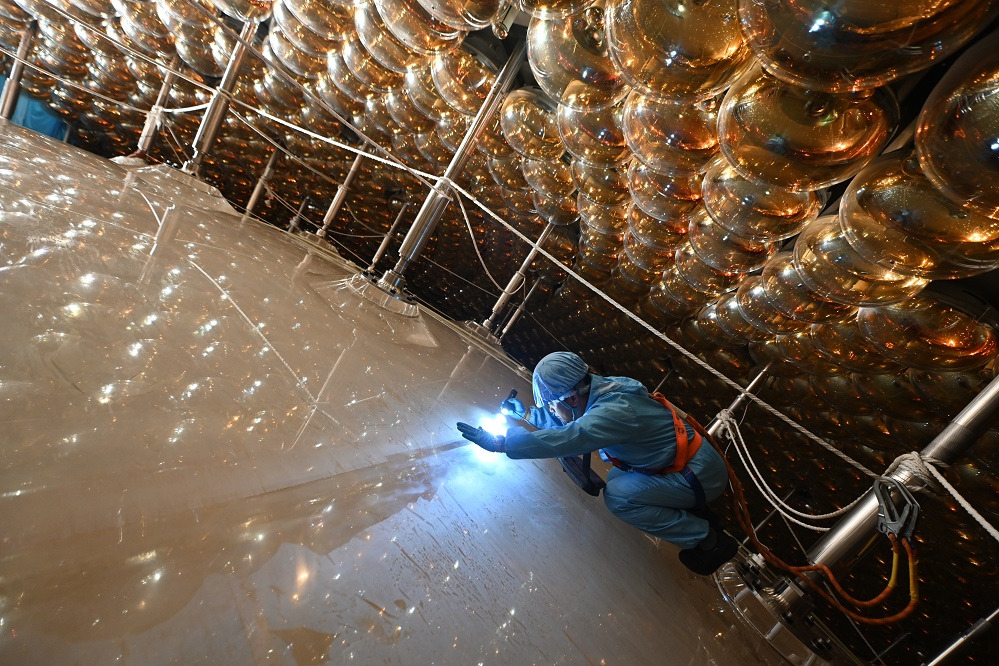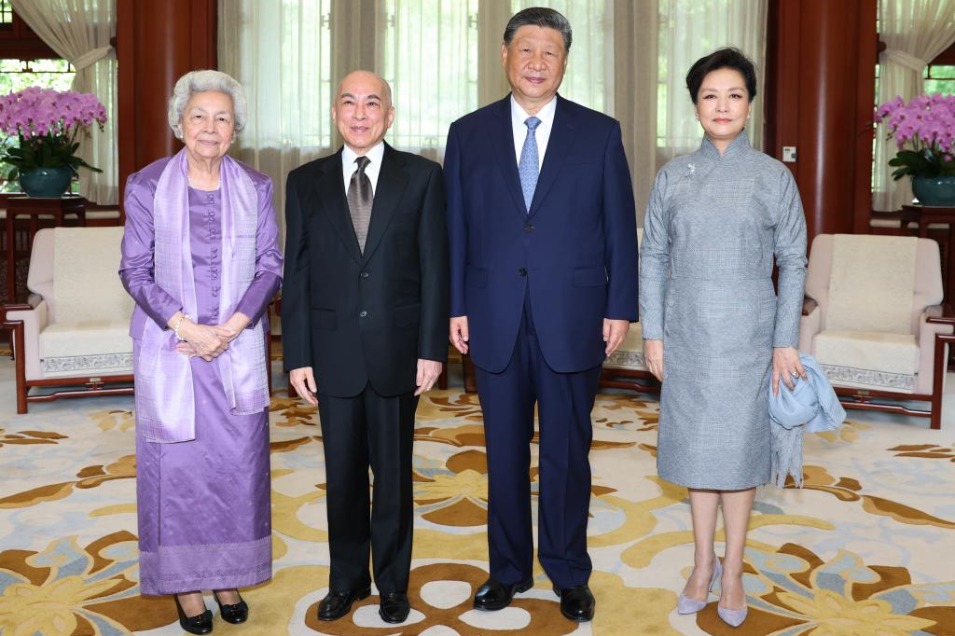Doors open wider for FDI to help world recover

On Dec 28, China's National Development and Reform Commission and the Ministry of Commerce released an updated version of the Catalogue of Industries for Encouraging Foreign Investment, extending the favorable policies to more industries.
This is the first revision of the catalog whose inaugural edition was published in 2019. There are now 1,235 items in the updated catalog, with 127 items newly added and 88 revised.
The revised catalog prioritizes foreign investments in high-tech manufacturing and high-end producer services, and enlarges the secondary catalog applicable specifically to central and western provinces and autonomous regions.
It is a fresh sign of China's determination to build an open economy and promote economic globalization in the pandemic era and amid waves of anti-globalization sentiments.
The revision is expected to further integrate foreign enterprises into the new development paradigm.
It will likely also help improve the structure and quality of foreign capital, promote high-quality development and drive the recovery of the world economy faced with profound changes unseen in a century.
More industries are now eligible for foreign investment and favorable policies such as import duty exemption on self-use equipment, land supply support and land price discount, as well as tax rate cut for investments in central and western provinces and autonomous regions.
The revised catalog is expected to make a positive difference to the Chinese economy as well as the rest of the world in four important ways:
First, the revision will help stabilize foreign investment and promote globalization in the face of COVID-19. The COVID-19 outbreak in 2020 severely blocked the cross-border movement of people, goods and capital and led to a sharp contraction of global foreign direct investment.
According to the United Nations Conference on Trade and Development, global FDI dropped by 49 percent in the first half of 2020.
China acted quickly to bring the pandemic under control and took full advantage of its strong support system for industries and a vast domestic market to attract foreign investment.
The Chinese government vowed to extend the catalog shortly after the pandemic outbreak and published a draft version in July to consult foreign companies, chambers of commerce and trade, and the general public.
Its final release vividly demonstrates China's attitude toward promoting economic globalization in the spirit of openness, inclusiveness and a win-win philosophy.
The larger goal is to power the recovery of the global economy while improving its own economic structure.
Second, the revision will promote the modernization of China's industrial and supply chains. In full cooperation with local companies, a large number of foreign enterprises have been playing an active and indispensable role in fostering high-quality industrial clusters in various fields like information technology, new energy vehicles, machinery equipment as well as textile and apparel, significantly contributing to the modernization of China's industrial system.
In the proposals for formulating the 14th Five-Year Plan (2021-25) for national economic and social development and the long-range objectives through the year 2035, it is emphasized that the country needs to strengthen international cooperation on industrial network security and establish modern industrial and supply chains that are more innovative, higher value-added, safer and more reliable.
The revision fully implements this philosophy, prioritizing foreign investment in key inputs covering raw materials, components and spare parts as well as equipment.
For example, the revision adds to the catalog key raw materials like high-purity electron-grade hydrofluoric acid, polyvinyl polyamine and high-performance fiber, key components and spare parts such as high-pressure vacuum components, special valves and special glasses, key equipment such as integrated circuit test equipment, high-end manufacturing equipment and hardware related to L3/L4/L5 autopilot.
Encouraging foreign investment in these industries will help reinforce the strengths of China's industrial network while overcoming its weaknesses, thus promoting the upgrade of the industrial and supply chains.
Third, the revision will facilitate the high-quality development of the services sector and promote industries toward higher value-added links in the smile curve. (A smile curve is a graph measuring an industry's value on the y-axis against the value chain on the x-axis.)
The value chains of most industries can be represented by a smile curve, with research and development on the left, marketing and branding on the right, and processing and manufacturing in the middle.
Commonly, two ends of the value chains command higher value-added than the middle part.
China is upgrading its industries to both ends of the smile curve through integration of manufacturing and services.
Foreign investors have a special interest in China's services sector, which accounted for 78.3 percent of total foreign investment during the first 11 months of 2020.
The growth rate of high-tech services even reached 31.6 percent. It is highly necessary to further encourage foreign investment in the services sector, especially knowledge-intensive services such as research and development, professional services, business services and finance.
In this regard, the revision emphasizes the integration of manufacturing and services. It covers R&D services in fields like 5G and blockchain, business services like maintenance of high-end equipment and digitalization of production lines, logistics services like global e-commerce, commodity import and export distribution center, and community chain delivery.
It also underlines information services like online education and online medical services.
The revision will push China's producer services toward high-end links in the value chains and thus promote the optimization and upgrade of the economic structure.
Fourth, the revision will help central and western provinces and autonomous regions to fully exploit their advantages and promote coordinated development of the open economy across different regions.
Although lagging behind in the overall level of economic development, central, western and northeastern provinces and autonomous regions of China have unique advantages in manufacturing foundations, labor force, energy and resources.
With full use of such comparative advantages, they have the potential to become new frontiers of opening-up.
The revision takes into consideration the unique resources and actual needs of central and western provinces and incorporates new industries specially tailored for these regions to support the high-quality development of their open economy.
For example, the revision adds agricultural product processing and tourism development to the priority areas identified for Heilongjiang and Yunnan. The two provinces are endowed with abundant resources in agriculture and tourism.
Similarly, the two provinces of Henan and Shaanxi and the Guangxi Zhuang autonomous region, which already have strong medical industries, will receive added emphasis in medical equipment and instruments and active pharmaceutical ingredients.
Vocational education is highlighted in Liaoning, Anhui and Hunan provinces, which are rich in labor force.
In order to support the development of the Hainan Free Trade Port, the revision includes shipping services and financial services covering businesses in securities, futures, insurance and financial leasing, which are exclusive to Hainan.
To sum up, with the revision of the Catalogue of Industries for Encouraging Foreign Investment, favorable policies for foreign investment now cover more industries, better integrating foreign capital into the New Development Paradigm.
It is vivid evidence of China's determination to build an open economy and promote economic globalization, which will help stabilize foreign investments and drive the recovery of the world economy.
Li Dawei is a senior research fellow at the Institute for International Economy, which is part of the Chinese Academy of Macroeconomic Research. Chen Dapeng is an assistant research fellow at the IIE.
The views don't necessarily reflect those of China Daily.

Today's Top News
- A misjudgment of situation in the first place, destabilizing AUKUS deal may bite the dust: China Daily editorial
- Welcome would be welcomed if sincere: China Daily editorial
- Xi and his wife meet Cambodian King, Queen Mother
- Xi meets Russian State Duma chairman
- Parade a tribute to Chinese people's sacrifices in WWII
- SCO will strongly uphold multilateralism






























